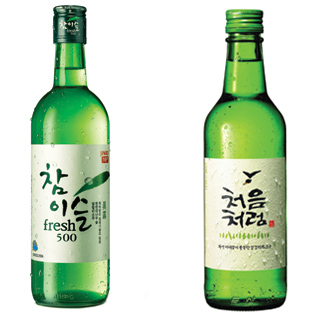Soju makers told to go easy on ads

Reacting to negative advertisements the companies have lobbed at each other, the Fair Trade Commission said yesterday it gave correction orders to the companies because of negative ads they released in 2006.
The order bars the companies from running the negative ads.
The fierce competition in the market for soju, the popular local alcoholic beverage distilled from either rice or sweet potatoes, has led to some nasty attacks.
“The negative ads used unfair comparisons which could cause damage to competing products and mislead consumers,” Jeon Shin-ki, an official with the agency’s consumer department said in a release.
The tussle began in July 2006 when Jinro released newspaper ads and leaflets that said Doosan’s Cheoumcheorum soju brand was produced by electrolysis and associated the product with electric shock. The ads said that Jinro’s competing Chamisul soju was purified with natural bamboo charcoal and was better at preventing hangovers than Doosan’s soju.
In August and September, Doosan fired back with ads saying Jinro’s Chamisul was a failed copy of its own superior product. Doosan claimed that only its “alkali deoxidization” method could produce a pure booze, while bamboo charcoal was inferior.
Jinro is the leading soju producer with about 50 percent of the national market. Doosan is in third position, while Kumbokju is second.
Jinro’s Chamisul, launched in 1998, was the first “light” soju in the market, aimed at younger drinkers and women.
However, Doosan’s similar Cheoumcheorum, launched in February 2006, also has less alcohol. The products’ 20 percent alcohol content compares to 23 percent for most other soju brands.
Jinro’s attack began when Doosan’s new light soju was grabbing market share at its expense, especially in the Seoul metropolitan area, which accounts for over 40 percent of the entire soju market.
Jinro’s market share fell to 85 percent in September 2006 from 92.6 percent in 2005 in Seoul and surrounding areas, according to the Korea Alcohol & Liquor Industry Association.
Doosan’s market share rose to 13.4 percent in September 2006 from 6.1 percent in 2005.
In March, Jinro’s Korean market share fell below 50 percent. In May, Doosan’s market share rose to about 25 percent in the Seoul metro area.
The soju business became fiercely competitive after 1996, when a regulation was lifted that had required soju makers to sell more than half their output in the province where the beverage was distilled.
The change opened the way for battles among the big companies, but soju makers still hold market share in areas where they have traditionally been based but that is changing as regional loyalties fade.
The commission said it is also investigating Doosan’s salespeople for falsely accusing Jinro of being a Japanese company.
By Limb Jae-un Staff Writer [jbiz91@joongang.co.kr]










with the Korea JoongAng Daily
To write comments, please log in to one of the accounts.
Standards Board Policy (0/250자)